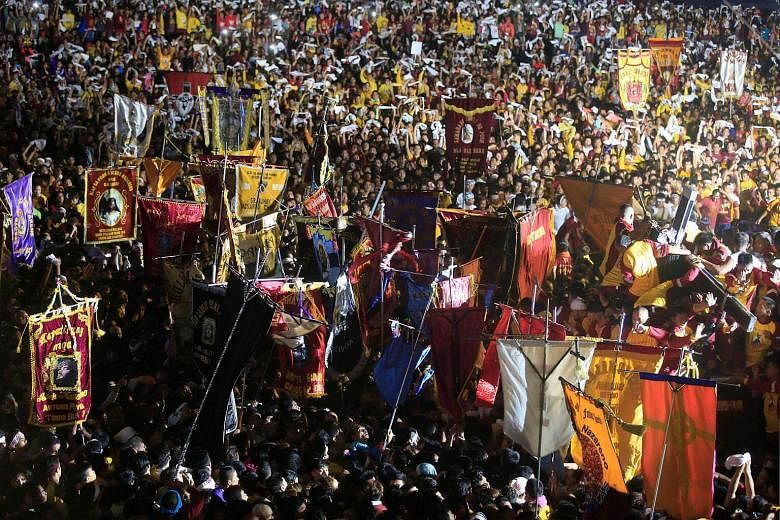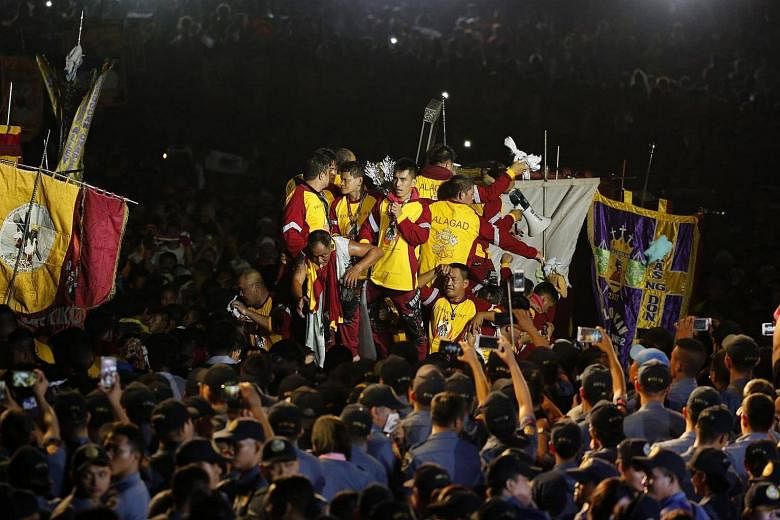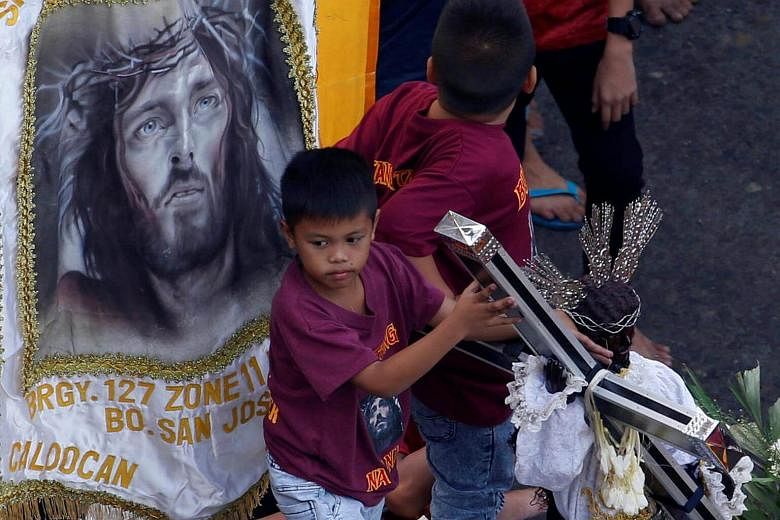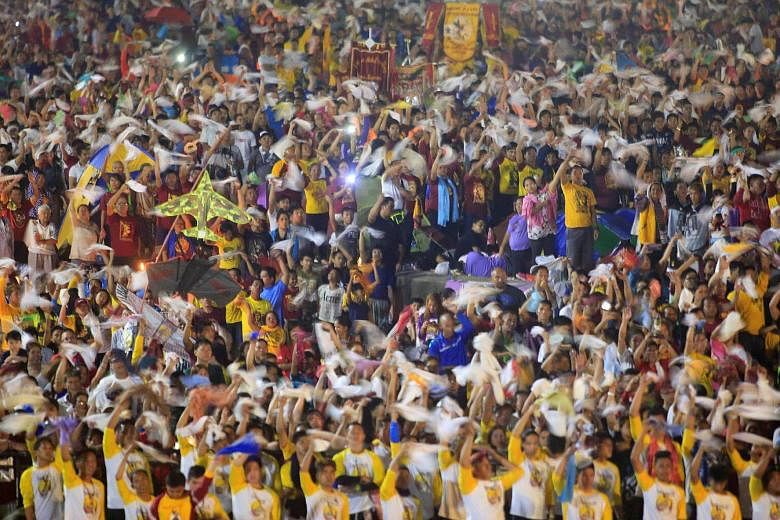MANILA - Some two million Catholics were expected to line the procession route of an iconic 400-year-old statue of Jesus in Manila on Monday (Jan 9), as security forces went on high alert amid concerns that Muslim extremists may target the mammoth gathering.
The procession, known as "Traslacion" (literally meaning "to transfer"), began at around 5.30am when a carriage bearing the life-size statue of a dark-skinned, cross-carrying Jesus, known here as the "Black Nazarene", left the Quirino grandstand in central Manila.
It will travel across 10km of city roads and alleys, carrying the statue to a church in Manila's historic Quiapo district where its arrival, expected early Tuesday morning, will mark the end of the Feast of the Black Nazarene.
As an expression of their devotion, the crowds will try to push their way through the crushing mob, trying to touch the statue, wipe it with a handkerchief or towel, or hold the rope used to tow its carriage.
The statue stirs up religious frenzy among Catholics who believe that pieces of clothing rubbed on its wooden surface during the procession can heal diseases such as cancer, diabetes and hypertension.
For most devotees, joining the procession also marks a new beginning, as they pray for forgiveness of their sins for the past year.
"The devotion… is somewhat similar to a pilgrimage experience, and every year they come and somehow something changes in the people," Monsignor Jose Clemente Ignacio, rector of the Quiapo church where the Black Nazarene is housed, told the Catholic News Agency.
Mr Joel Mataro, a photojournalist who has been documenting the procession since 2012, told CNN Philippines: "There's a certain attraction to it. You can feel it. There's something that will compel you to go to it."
Such extreme forms of worship are a hallmark of the Philippines, where four in five are Catholics, a legacy of centuries of Spanish colonialism that ended in 1898.
In a message issued by his office, President Rodrigo Duterte, who has been at odds with church leaders over his anti-crime drive, birth control policy and his macho lifestyle, offered encouragement to those joining the procession.
"Prayers are likely answered because we do not give up or get tired from asking God for the fulfillment of our heart's desires," he said. "Such is the phenomenal expression of faith of the millions of devotees in the form of gratitude, petition, and sacrifice shown in the image of the Black Nazarene."
The statue was brought to Manila by a group of missionaries from Mexico in 1606. It was enshrined in two churches before it found its current home in Quiapo in 1767. The widespread belief is that the statue's ebony exterior was due to a fire on the galleon that brought it from Mexico, but some scholars believe it was not charred but naturally dark, as it was carved from mesquite wood.
Philippine security forces have taken extraordinary measures to secure the procession's route, following reports of possible terrorist attacks.
Police have asked telecom carriers to shut down mobile phone signals in central Manila, as a security measure on top of signal jammers already installed in key locations.
Recent attacks by Muslim militants with ties to the Islamic State in Iraq and Syria (ISIS) saw the use of mobile phones to set off bombs.
A gun ban has also been enforced across Manila, and police have prohibited the use of backpacks and drones. Over 5,700 policemen have been deployed to secure the procession route.
Security officials are concerned that ISIS-linked terrorist groups in the war-torn southern island group of Mindanao may target the procession, as retaliation for recent setbacks dealt by the government.
Last week, a police team managed to track down and kill the leader of Ansar al-Khilafah Philippines, Mohammad Jaafar Maguid, alias "Tokboy". He was said to have been an apprentice in bomb-making of Malaysian terrorist Zulkifli bin Hir, alias "Marwan", who was killed by police commandos in his hideout in Mindanao in January 2015.
Security forces are also on alert for possible attacks from two other ISIS-linked groups, the Maute and Abu Sayyaf groups, which have seen their fighters either killed or arrested in military offensives meant to evict them from their strongholds.
At least 11 Maute militants were killed in a military operation in November (2016), after the group tried to occupy government buildings in a remote town in Lanao del Sur province.
In December last year, Malaysia's security forces killed the leader of an Abu Sayyaf squad snatching tourists, fishermen, and sailors in waters off Sabah state and the Philippines' Sulu archipelago.






